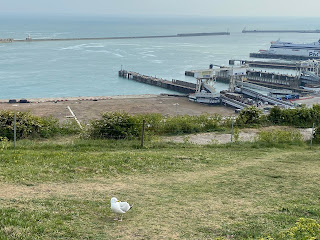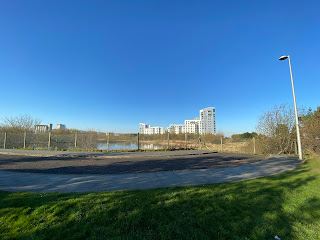At some point last year, I purchased a book called Birdwatching London. Written by David Darrell-Lambert and published in 2018 in association with the London Wildlife Trust, it is all about where you can go to watch birds in the London area. 38 places to be exact; big venues like the London Wetland Centre and the RSPB reserve at Rainham Marshes, and plenty of reservoirs (out by Heathrow and along the Lea Valley), parks, woods and so on — some in Central London, others out in the suburbs (and a couple outside of what could be reasonably defined as London, such as Southend-on-Sea). Brent Reservoir is conspicuous by its absence, but I’m not going to quibble about what should and should not be included in a very useful book.
Some of the places in the book I have been to before, like Crystal Palace Park and Richmond Park (both visited when I walked the Capital Ring a few years ago). There are a few old favourites of mine in there, like Hampstead Heath, Hyde Park, the East India Dock Basin and the aforementioned Rainham Marshes. There are places I’d like to visit (and I went to one such last year — Woodberry Wetlands, a new nature reserve that’s a ten-minute walk from Manor Park Tube station; it too is on the Capital Ring but has been redeveloped as a nature reserve since I did that, and very nice it is too). And there are a couple that are very local, even more so than the Heath.
One of those is Coldfall Wood, a small area of ancient woodland on the border between East Finchley and Muswell Hill (actually a hundred yards or so into the latter, if the local authority signage is any guide). I used to go and birdwatch there every so often after Allison and I first moved to East Finchley, but what with one thing or another I’d not been there for several years until I noticed that it was in this book. I therefore decided to return and see what I could see. After all, it’s in walking distance from my house, so why not?
By ‘ancient woodland’, I mean in this case a remnant of the old Forest of Middlesex that used to cover much of what is now suburban North London (a clue that the area used to be woodland can even be seen in place names like, well, Finchley, which means a lea (clearing in the woods) where finches were known to gather); other remnants also exist, like Highgate Wood and Queen’s Wood — both of which are also included in Birdwatching London.
Coldfall Wood, which has been designated as a local nature reserve since 2013, is 35 acres (14 hectares) in size and is bordered by residential streets, allotments, a municipal cemetery and the Muswell Hill Playing Fields. I entered the wood via one of the streets, Creighton Avenue.
Although the sounds of the suburbs permeated the woodland — car alarms, the roar of traffic on the North Circular — stepping into Coldfall Wood does feel like going back in time to something more primal; the woodland here actually does date back thousands of years. Maybe I’m being overly imaginative, but I think there’s something about woodland that connects us to our ancient ancestors. Although they had wolves to contend with, where I had to deal with dogs and their walkers, potentially scaring the birds away!
Actually, one dog-walking couple did stop to chat, and told me that a walking group had seen a pair of Firecrests here recently. None of those for me (this time at least) — my sightings had begun with a Jay and continued with Carrion Crows (lots of those), Ring-necked Parakeets, a male Great Spotted Woodpecker, a Stock Dove and, unlike my recent visit to the Heath, plenty of small birds.


A Wren entertained me with its singing (such a big voice for such a small bird!), a Nuthatch flew by with a beak full of food, an uncharacteristically lone Long-tailed Tit perched on a nearby twig, not far from one of its Blue cousins. A small flock of finches flew away at the sound of a nearby dog; I was just about able to identify them as female Chaffinches before they disappeared from view. A small brown bird identified itself as a Chiffchaff with its distinctive song. Add to that two Robins, a Dunnock and a Great Tit. There were also a few Blackbirds and four Redwings; can’t be long before the latter return to Scandinavia for the summer.
An hour well spent! I should come here more often.






















